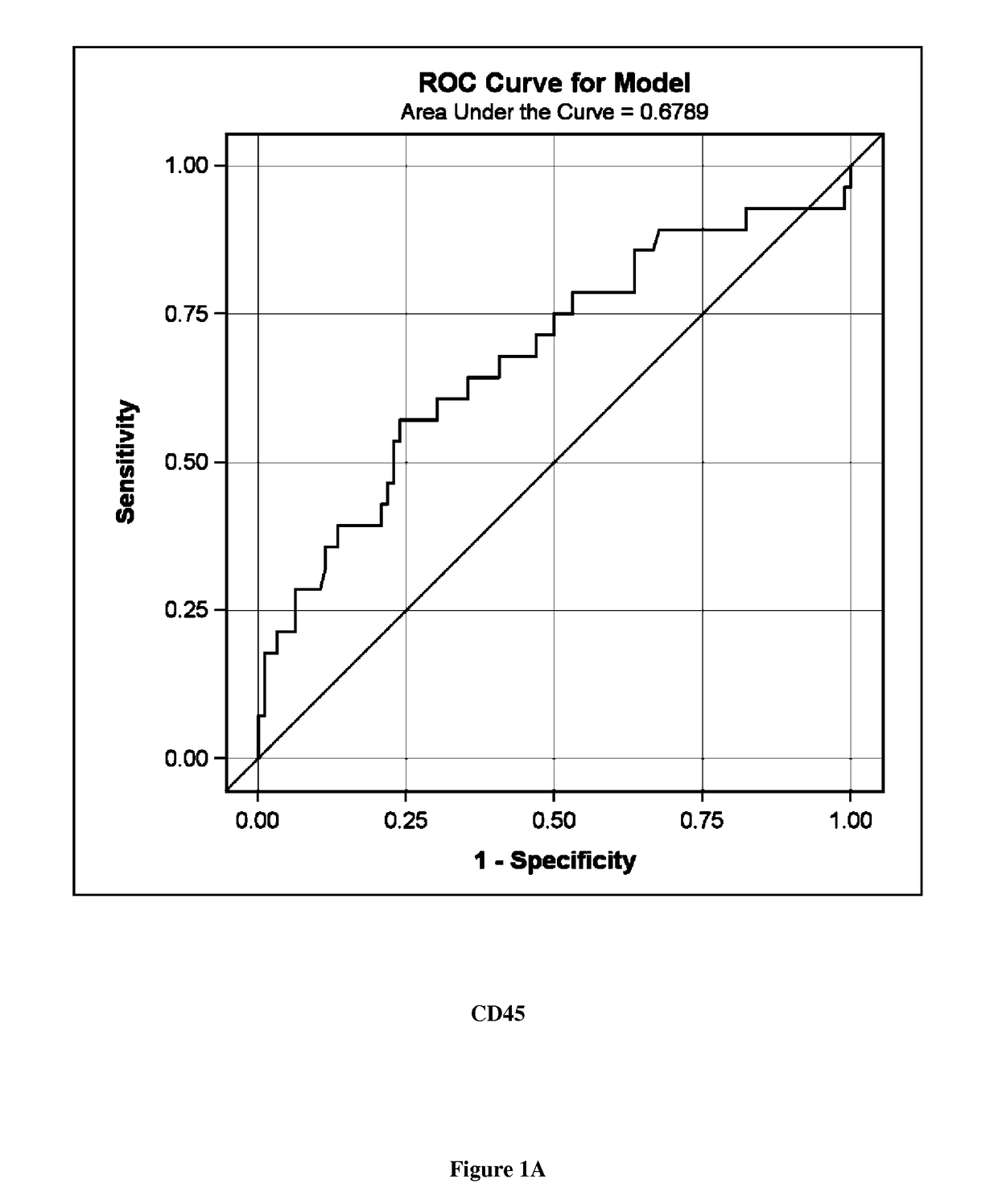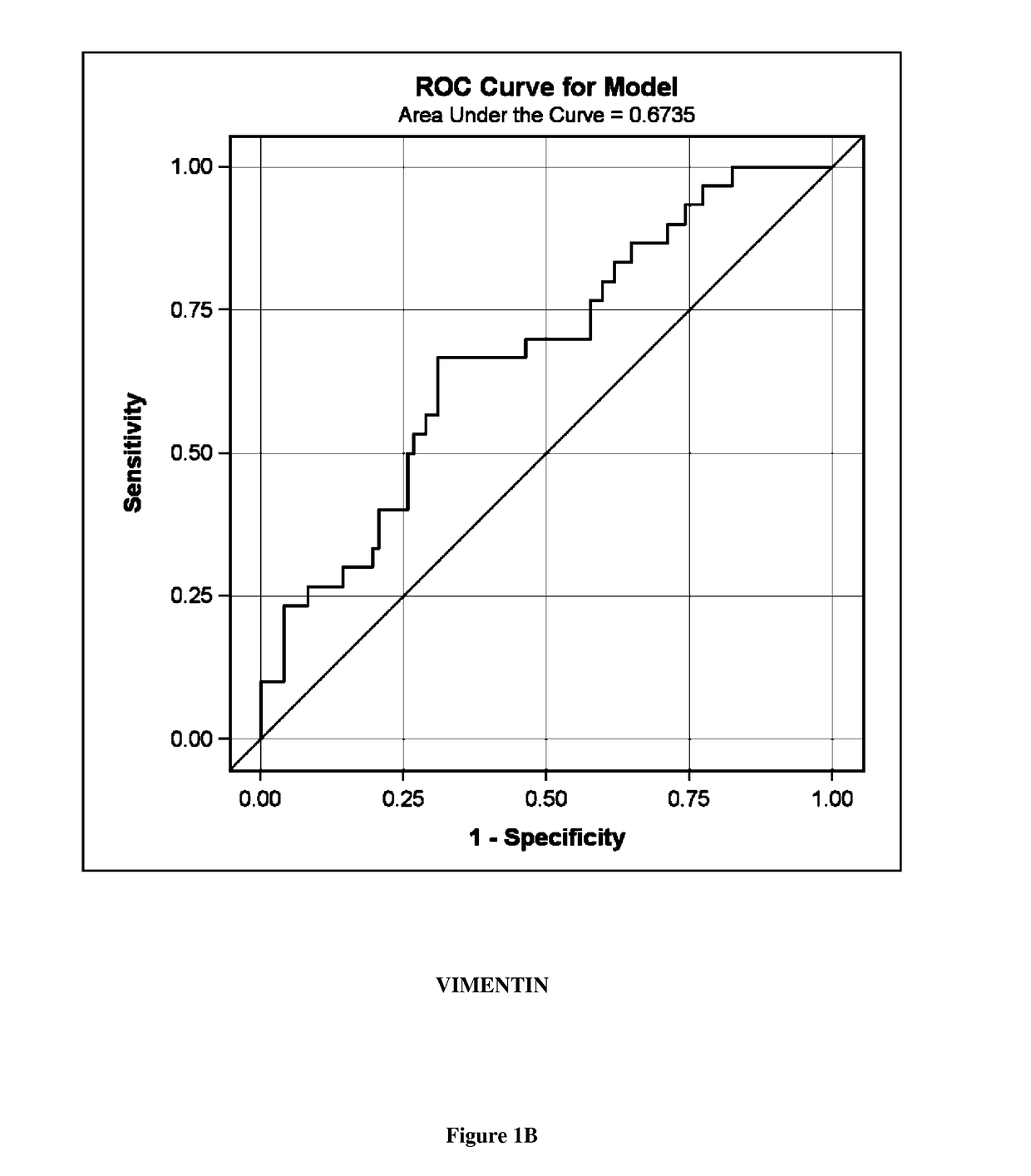A new biomarker of chronic allograft nephropathy and of renal transplant rejection
a technology of chronic allograft nephropathy and biomarker, which is applied in the field of new biomarkers of chronic allograft nephropathy and of renal transplant rejection, can solve the problems of undefined patient prognosis
- Summary
- Abstract
- Description
- Claims
- Application Information
AI Technical Summary
Benefits of technology
Problems solved by technology
Method used
Image
Examples
example
[0079]Material & Methods
[0080]Study Cohort Characteristics:
[0081]The study was performed in 149 (Kidney Transplanted) KTx patients, who were submitted to a renal biopsy (Bx) in our Department during the period from February 2009 to August 2012 and followed-up until 30th of August 2013 or up to the return on dialysis or death. The protocol was approved by the Ethic Committee of Fondazione IRCCS Policlinico and was conducted according to the ethical principles of the Helsinki Convention.
[0082]Study Design:
[0083]Indication to the Renal Graft Biopsy:
[0084]The Bx were performed according to the approved local procedure, with a 16 Gauge needle and under ultrasound control. The Bx were performed only on clinical indications, which were as follows: isolated proteinuria (15%); isolated reduced renal function (RF), assessed by increased serum creatinine >25% respect the basal level of each patient (60%); association of both proteinuria and reduced RF (14%); other clinical reasons (suspected B...
PUM
| Property | Measurement | Unit |
|---|---|---|
| time | aaaaa | aaaaa |
| time | aaaaa | aaaaa |
| time | aaaaa | aaaaa |
Abstract
Description
Claims
Application Information
 Login to View More
Login to View More - R&D
- Intellectual Property
- Life Sciences
- Materials
- Tech Scout
- Unparalleled Data Quality
- Higher Quality Content
- 60% Fewer Hallucinations
Browse by: Latest US Patents, China's latest patents, Technical Efficacy Thesaurus, Application Domain, Technology Topic, Popular Technical Reports.
© 2025 PatSnap. All rights reserved.Legal|Privacy policy|Modern Slavery Act Transparency Statement|Sitemap|About US| Contact US: help@patsnap.com



